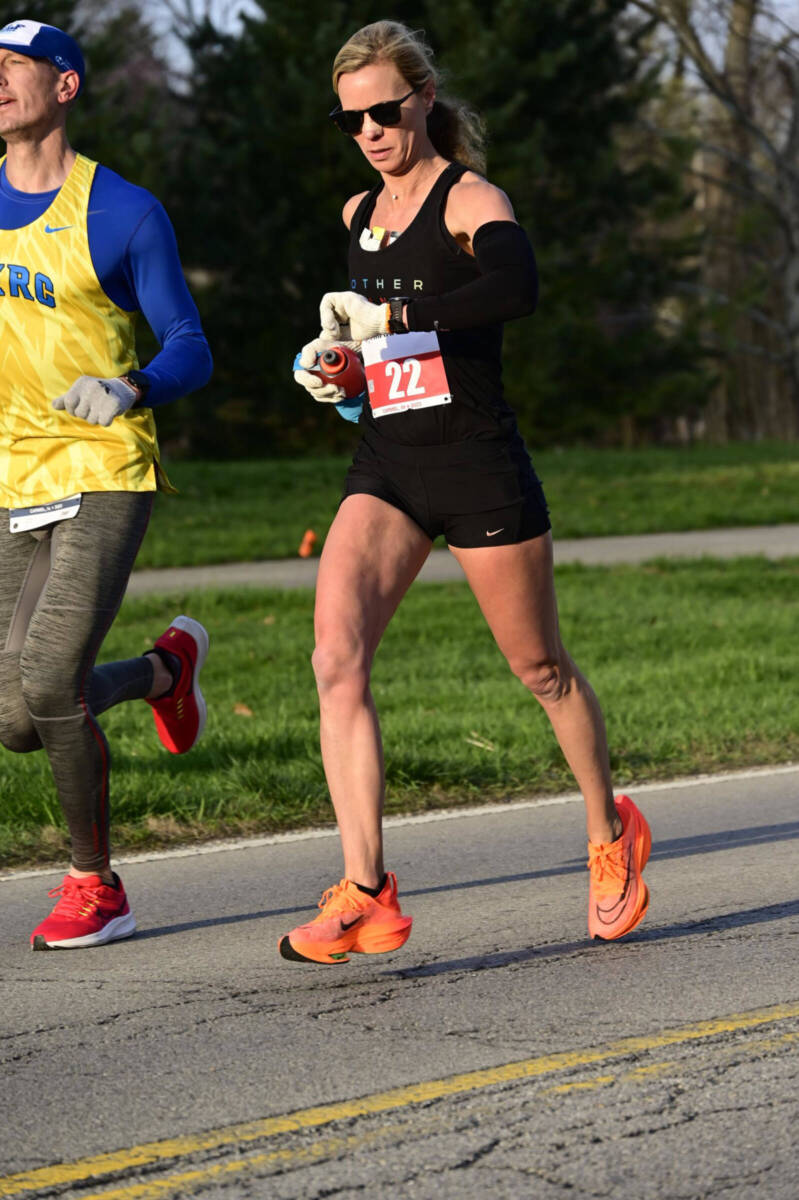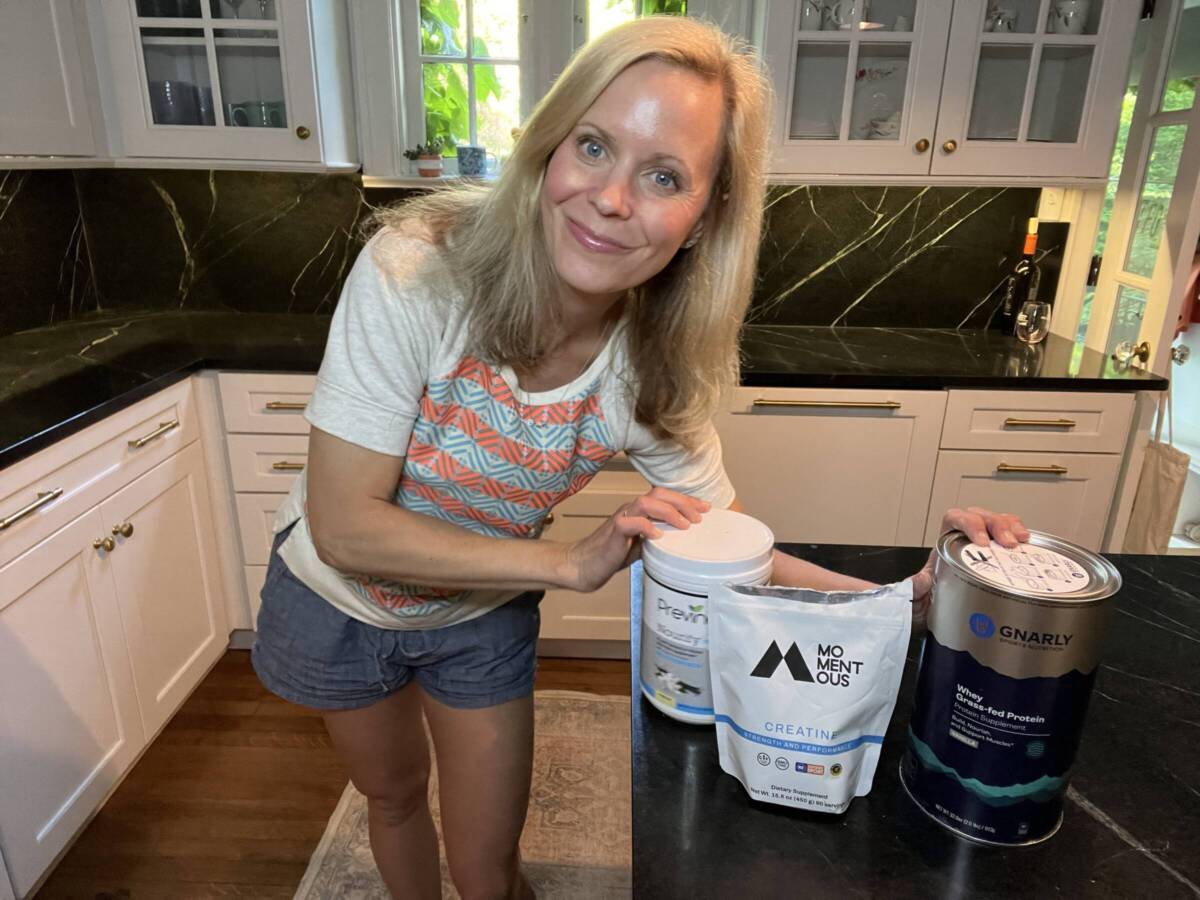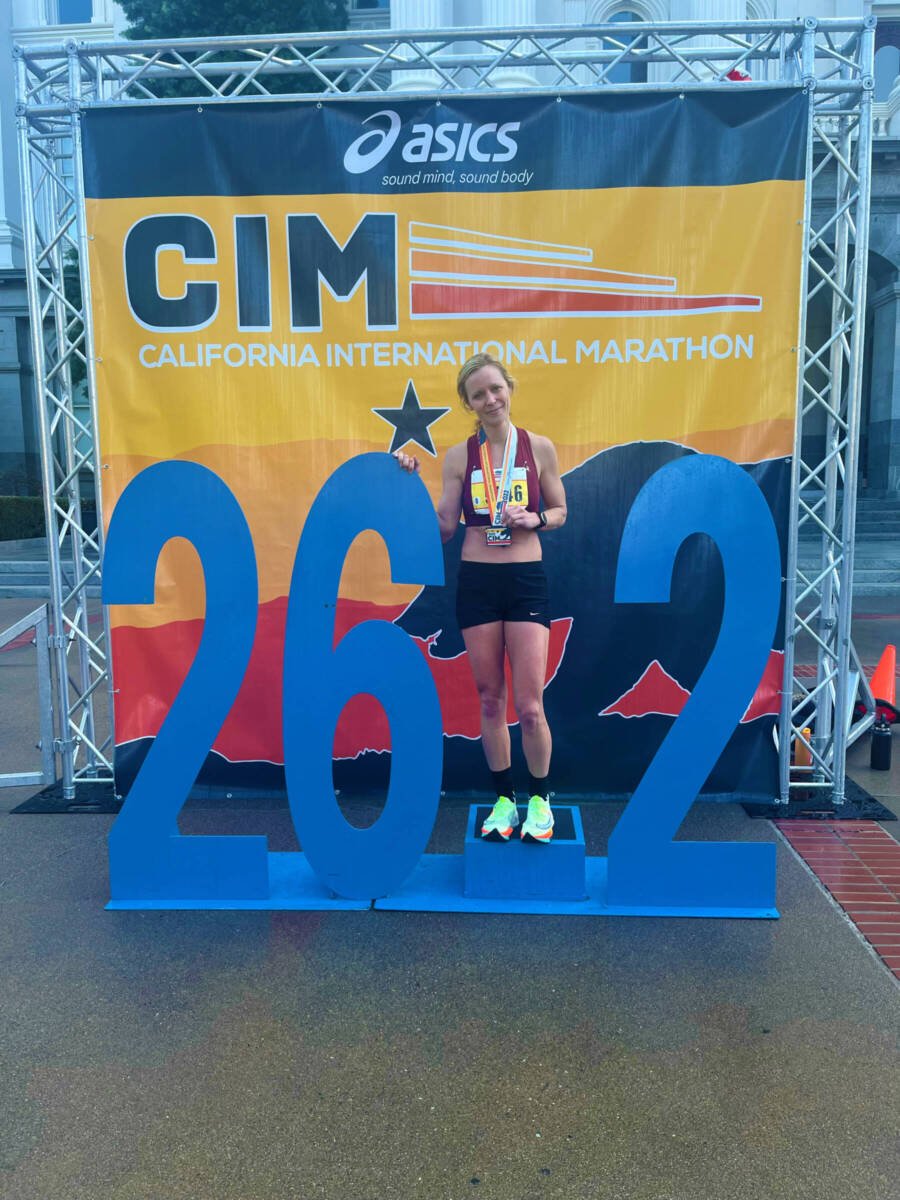How I Fueled My 2:54 Marathon
I rarely do this but I want to share my personal marathon fueling strategy because I’ve had a lot of questions about it. This marathon fueling strategy has helped me nail two sub-3 hour marathons in the past 4 months after 2.5 years off from running.

After I posted a ridiculous photo of me carrying a water bottle during the Carmel Marathon and saying I love bypassing water stops, I had hundreds of comments asking me WHY and HOW! So, I posted about it on Instagram and got a lot more feedback. People were intrigued—they wanted to know how I carry my hydration during a marathon and how I fueled during a marathon. I am sharing everything in fueling for a marathon because I think I nailed it.
My marathon fueling was spot on and I only hit “the wall” because I lack fatigue resistance in my legs from taking so much time off (due to injuries and COVID stuff). I was on pace for a 2:48 marathon through mile 19 and then my legs just stopped. It was not glycogen or electrolyte shortage related! It was training related! I just need more time running. Everyone is different of course, but this marathon fueling strategy left me feeling energized during the marathon and I had zero tummy troubles during and after the race.
Table of contents
What makes my marathon fueling strategy successful I believe is that:
- You can hydrate whenever you want
- No need to slow down at water stops
- It frontloads hydration where it is most critical
- It gets you the optimal amount of 50-60 grams of carbs and 400 milligrams of sodium an hour
- Uses a hydrogel and natural sports drink so easy on the stomach
- Also, it mixes carb sources for optimal processing
My 2:54 Marathon Fueling Strategy
So here is what I did fueling during my marathon:
- I had Nuun in my bottle.
- I took a Maurten 15 minutes before.
- Then a Maurten gel at 4 miles. (Stashed gels in my bra)
- A Huma Gel+ at 8 miles.
- Another Maurten at mile 12.
- A caffeinated Huma Gel+ at mile 16.
- A caffeinated Maurten at Mile 20.
- Then half of a Maurten at mile 23.
- I also had 4 salt tabs that I took sporadically on the back half if I felt my legs cramping.
My goal was to get about 400 mg of sodium an hour and 60g of carbs. I had no stomach issues during or after the race at all (a first for me!), and have recovered well! Everyone is different of course but this is what worked for me at Carmel and CIM.
FAQs about Fueling for a Marathon
How do you fuel for a marathon?
Most people like to use energy gels, blocks, or chews in a marathon. I personally like Maurten gels the best because they are easy to open and swallow. When choosing an energy gel for a marathon, you want to make sure you can easily:
- Open it
- Store it
- Swallow it
- Stomach it, and
- Like the taste
There are some gels like SIS that I really like, but it is just too much to swallow that I keep going back to Maurten because it goes down easily and barely has a flavor. I also like Huma Gel+ because it has a lot of electrolytes. Most energy gels don’t have enough electrolytes to use alone but Huma gels have 240 mg of sodium, helping me hit my goal of 400mg of sodium an hour.
How many carbs and sodium do you need in a marathon?
Ideally, runners should aim for 50 to 60 grams of carbs an hour and 400 milligrams of sodium an hour. Runners can get this by using energy gels, salt tabs, and sports drinks. What’s tricky is that not many energy supplements have all you need in one and mixing these can be tough on the stomach. Therefore, you need to experiment on your training runs to find out what works best for you. My below marathon fueling strategy is what works best for me.
Should you take salt tablets during a marathon?
I used salt tabs during my marathon when I felt my muscles starting to cramp. You need about 400 milligrams of sodium per hour of running (more if you are a salty, heavy sweater). Unfortunately, most energy gels don’t have a lot of sodium, and drinking enough of a sports drink to get to 400 can be tough.
Therefore, taking salt tablets during a marathon can help fill in the gaps. Be sure to practice with these! I took a total of four salt tablets during my marathon in the back half to help my muscles keep contracting.
How do you carry hydration during a marathon?
Okay, so this was the biggest question I had on Instagram. I decided I hate aid stations. I stink at them. I slow down. I spill the cups on the poor volunteers or myself. I don’t get enough fluids because it all spills out.
So I took back control by buying a 18-ounce Nathan water bottle which I sipped on every mile. My plan was to use it through the half and then hit up aid stations. However, the weather was cool so I ended up using it until the final water stop at mile 25 where I dropped it. A lot of people like to use a Nathan Hydration vest which can also hold gels.
I hate carrying things when I run. I usually stash bottles on training runs but it didn’t really bother me in a race. And it got lighter as the race got harder!
If you need more fluids, you can have someone hand you a bottle at the halfway mark. You can also use a bottle for the first miles where it is most crucial, then ditch and fill in the gaps at water stations. I figured if I hated carrying the bottle, I could always do that.
So basically, you have five main choices for hydrating during a marathon:
- Carry a bottle
- Wear a waist belt
- Have someone hand you a bottle
- Do water stops, or
- Use aid stations
How do you do marathon aid stations?
If you decide you don’t want to carry a water bottle during your marathon, you should know what the marathon aid stations will have and practice with that. You can also set up a table in your driveway and practice running past it and grabbing cups—or grabbing cups from a friend or family member.
At a marathon water stop, you want to grab two cups at the top and close the tops so that it doesn’t spill out everywhere. This will ensure you get enough fluids.
I find this tricky to do though, which is why I like carrying my own bottle. I also don’t like dealing with crowds.
Should I mix energy gels?
Yes, you should mix energy gels. Many sports nutritionists claim mixing energy gels can give you more energy because your body is pulling it from different sources.
For example, I used Huma Gel+ and Maurten. Huma Gel+ is mostly natural fruit juices and chia seeds whereas Maurten is glucose. The variety can also help them go down easier on race day.
Do you have a go-to marathon fueling strategy?






